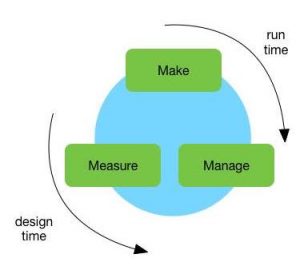Content architecture is about content design. It’s about solving how best to make your content accessible for use across the enterprise. That requires know what you want from your content. We don’t expect the business to know this upfront. Instead, workflow design takes key content stakeholders on a journey to engage them in the end-to-end content management lifecycle. In doing so, we shine a light on author experience and why it’s an important part of the content design process. Finally, content modelling does the heavy lifting to develop structured content to facilitate the access and flow of content across the business. However, the benefits of content design does not come with costs.
Content design requires investment
How structured and how meaningful does your content have to be? That depends upon how you plan to use it. To determine that, we need to work backwards from the consumer to fully understand those content requirements, and then bring that knowledge forwards into the content modelling process. Then design for it.

With the processes up and running (run time), we make, manage and then measure content. However, when designing for content (design time) you have to approach things in reverse. You can’t manage what you can’t measure. Equally, there’s no point in making anything if you don’t have a clue how it’ll be manage. So content design must start with a quantifiable definition of success that is measureable, seek tools and techniques to effectively manage content, to ensure what we make is sustainable and accessible across the enterprise.
Every business is different
There are no off-the-shelf content models that fit like glove for your brand. It’s also unlikely that you’ll be completely starting out afresh. They’ll be legacy content to deal with. Structuring content takes time and requires investment. Someone has to poke a stick at those big lumpy pieces of unmanaged content, break them down, analyse them, re-classify them, re-package them, and then define the rules by which they can be automatically reassembled by machines. And depending upon how much content you’ve got, that process can take a very long time.
But say we do all that, and we have reusable content types, it doesn’t stop there. We have to work with customers to stay relevant. To always experiment, to test and learn, in order to always deliver the right content. Only then are we designing for content. This is where content modelling helps tease out content needs and effectively shares them. Content modelling visualises those essential relationships, makes them tangible and accessible to the wider internal audience to drive both top-down and bottom-up decision making.
Content design is iterative and incremental
What about the design process itself? How does that work? It’s messy.
Well, it’s not long after we start content modelling that we run into reality. We don’t have all the content requirements. The content strategy is incomplete. Key audiences not captured. Existing processes not clear. Reality sucks but you have start somewhere. We have to start designing. Bounding the problem, finding the gaps, before we move forward.
When do you start design? Now. Get to know your target audiences, why they value content, how they create content, who has what access to content, and in what forms. To be honest, I feel better going into a situation where requirements open to change, rather than closed for comment. It makes design a power for good and not evil. For these reasons, design has to an iterative, incremental and recursive process.
Iterative because we need to break up the process into smaller manageable parts that we continually revisit old assumptions and challenge the status quo. We ask lots of simple question. So we break out that content type? What is the impact downstream information products? Let’s bring out that relationship between TV schedule and listing? If we don’t break it down into parts, content design will overwhelm us and make it harder and harder to know where to start.
As the content model evolves over time, we incrementally add more detail. With each iteration, we get a better shared understanding of the content. Shifting through masses of unstructured content, applying the same design techniques, to iteratively and incrementally, design structured content. I don’t know about you, but doesn’t that sound like a sensible way to progress through both the breadth and depth of your content.
Summary
Unmanageable content is growing in size, scope and complexity. We need to manage content.
In the past, we delivered for the web only. It was okay to bypass content design. This is no longer an option for brands wishing to hold sustainable and meaningful engagements with their customers. Content is communication, so brands need to have a better handle on their content.
The question is not if, but how much do we need invest in content design. Even if you do not structure your content, which I think you should, you need to present it in a way that is simple for others to understand. For the record, the best way to do achieve this is to show people your content. To visualise it.
We also have to start selling the value of manageable content, by highlighting the benefits and clearly articulating the costs involved to get there. Until we do that, no one is going to afford us the time to design for content.

